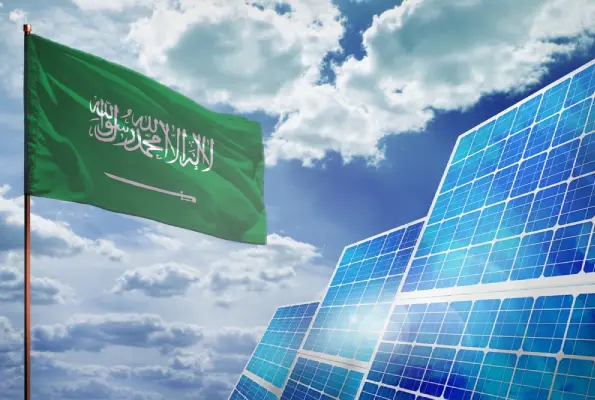According to a recent report, Saudi Arabia has achieved a world-record low levelized cost of electricity for solar photovoltaics, reaching USD 10.4 per megawatt-hour.
The Kingdom is positioned to lead the Middle East’s solar transition, along with the United Arab Emirates and Oman, according to a recent analysis conducted by the Norwegian business intelligence and research firm Rystad Energy.
The paper emphasised how solar power is becoming more and more important in Middle Eastern countries’ energy policies, and it attributed this trend to low hurdle rates, large-scale projects, falling hardware prices, high solar irradiance, low labour costs, and so on.
“The region has exceptional solar energy potential, receiving more than 2,000 kilowatt-hours per sqm annually in solar irradiation in countries such as Saudi Arabia, the UAE, and Oman,” the report stated.
According to the report, the Middle East’s total solar capacity reached 16 gigawatts by the end of 2023 and is expected to reach 23 GW by the end of 2024.
According to Rystad Energy’s estimates, the capacity will surpass 100 GW by 2030, with green hydrogen projects generating a 30% yearly growth rate.
Nearly two-thirds of the solar capacity in the region is anticipated to be accounted for by Saudi Arabia, the United Arab Emirates, and Oman combined, by the end of the decade.
In addition, it is projected that by 2050, renewable energy sources, such as wind, solar, and hydro, will account for 70% of the Middle East’s power generation mix, up from 5% at the end of 2023.
In the near future, the region will be largely dependent on natural gas despite this growth, with usage peaking around 2030.
Fossil fuels accounted for 93% of the power generated in the Middle East, with renewables contributing 3% and nuclear and hydropower contributing 2% each, by the end of 2023. Also, it is expected that 30% of installed capacity will be from renewables, potentially reaching 75% by 2050.


